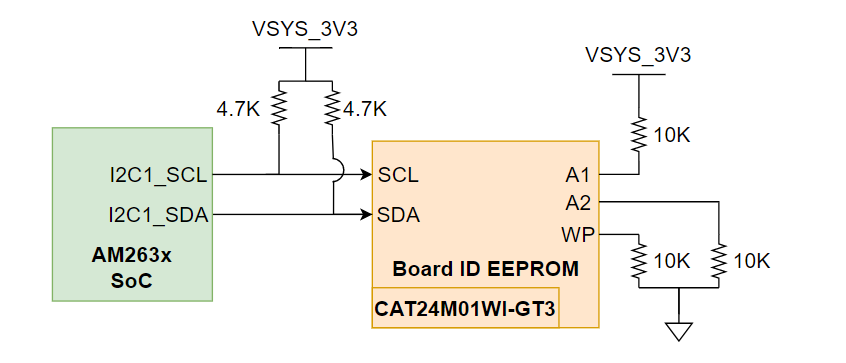SPRUJ10D May 2022 – September 2023
- 1
- Abstract
- Trademarks
- 1Preface: Read This First
- 2Kit Overview
- 3Board Setup
-
4Hardware Description
- 5.1 Functional Block Diagram
- 5.2 GPIO Mapping
- 5.3 Reset
- 5.4 Clock
- 5.5 Memory Interface
- 5.6 Ethernet Interface
- 5.7 I2C
- 5.8 Industrial Application LEDs
- 5.9 SPI
- 5.10 UART
- 5.11 MCAN
- 5.12 FSI
- 5.13 JTAG
- 5.14 Test Automation Header
- 5.15 LIN
- 5.16 MMC
- 5.17 ADC and DAC
- 5.18 EQEP and SDFM
- 5.19 EPWM
- 5.20 BoosterPack Headers
- 5.21 Pinmux Mapping
- 5References
- 6Revision History
4.5.2 Board ID EEPROM
The AM263x LaunchPad has a I2C based 1Mbit EEPROM (CAT23M01WI-GT3) to store board configuration details. The Board ID EEPROM is connected to the I2C1 interface of the AM263x SoC. The default I2C address of the EEPROM is set to 0x52 by pulling up the address pin A1 and pulling down the address pin A2 to ground. The Write Protect pin for the EEPROM is by default pulled down to ground and therefore Write Protect is disabled.
 Figure 4-7 Board ID EEPROM
Figure 4-7 Board ID EEPROM